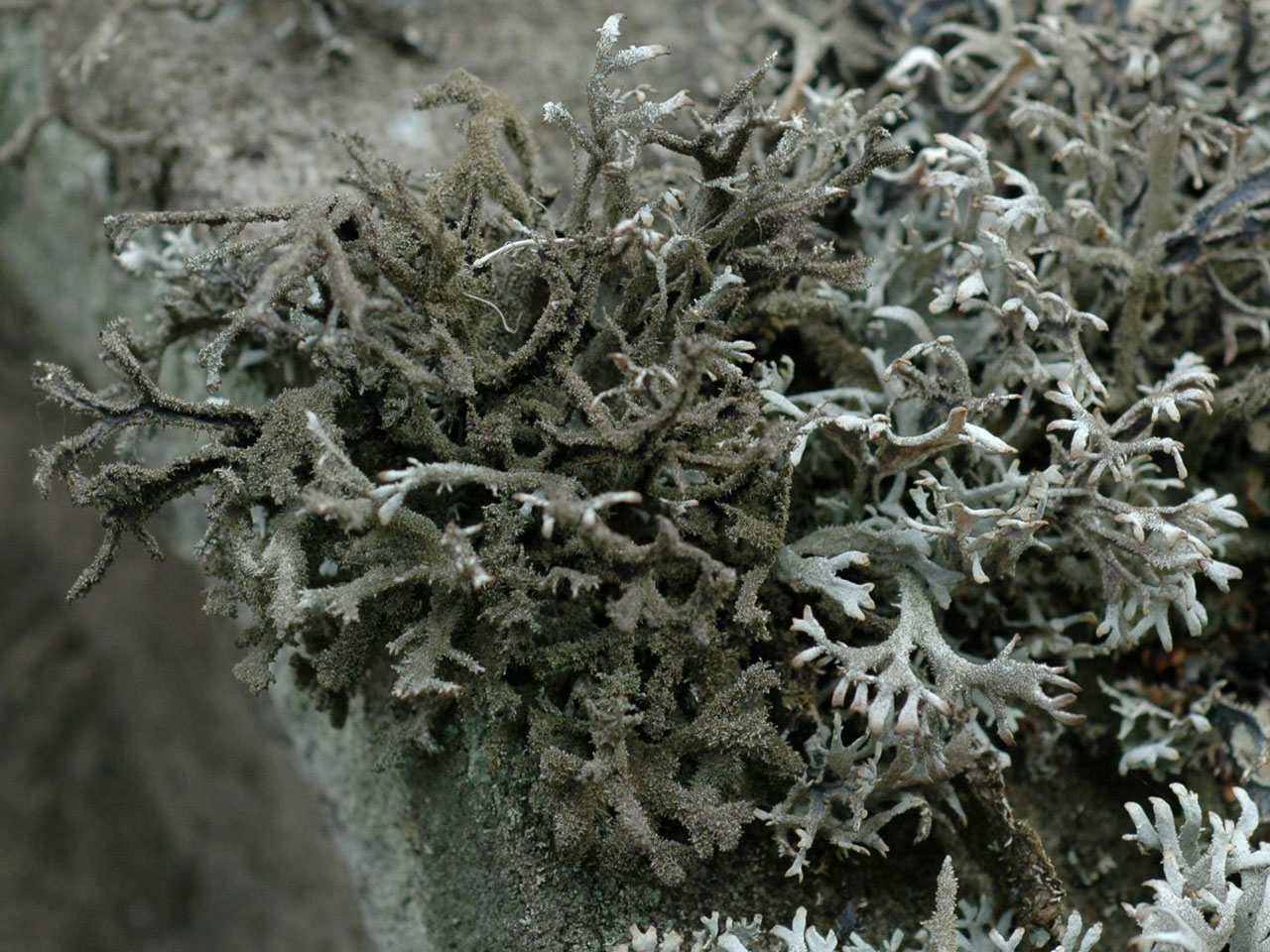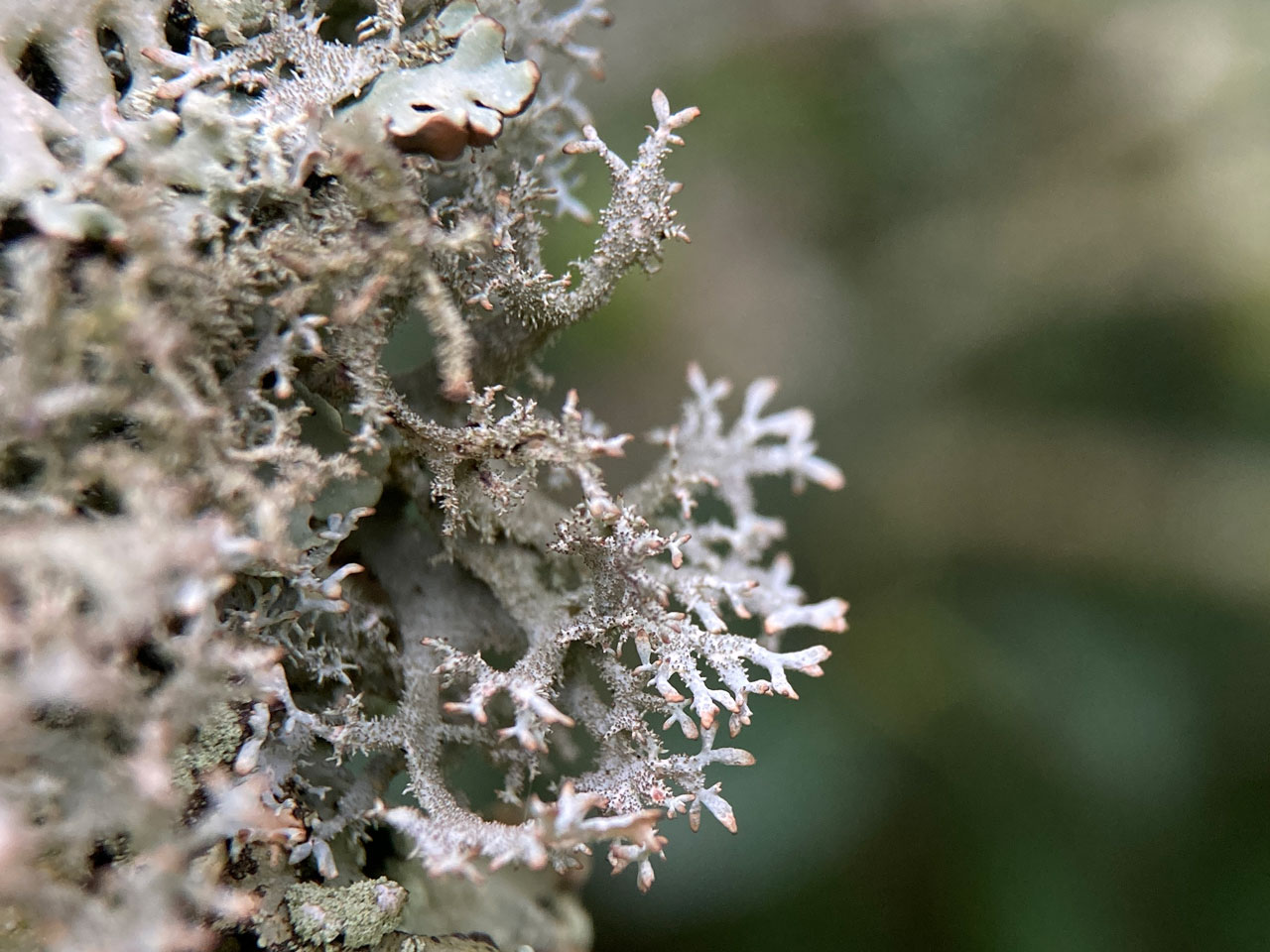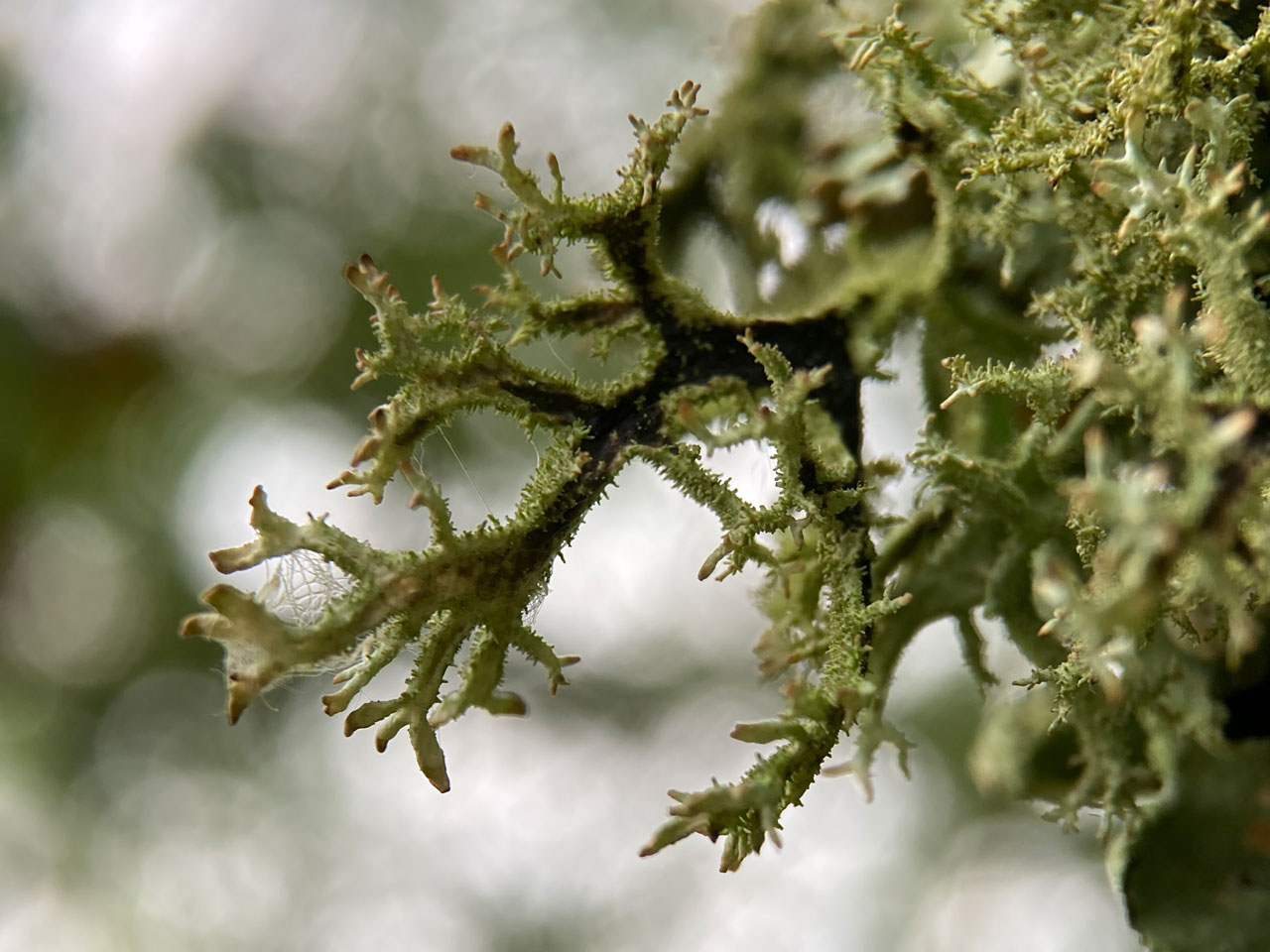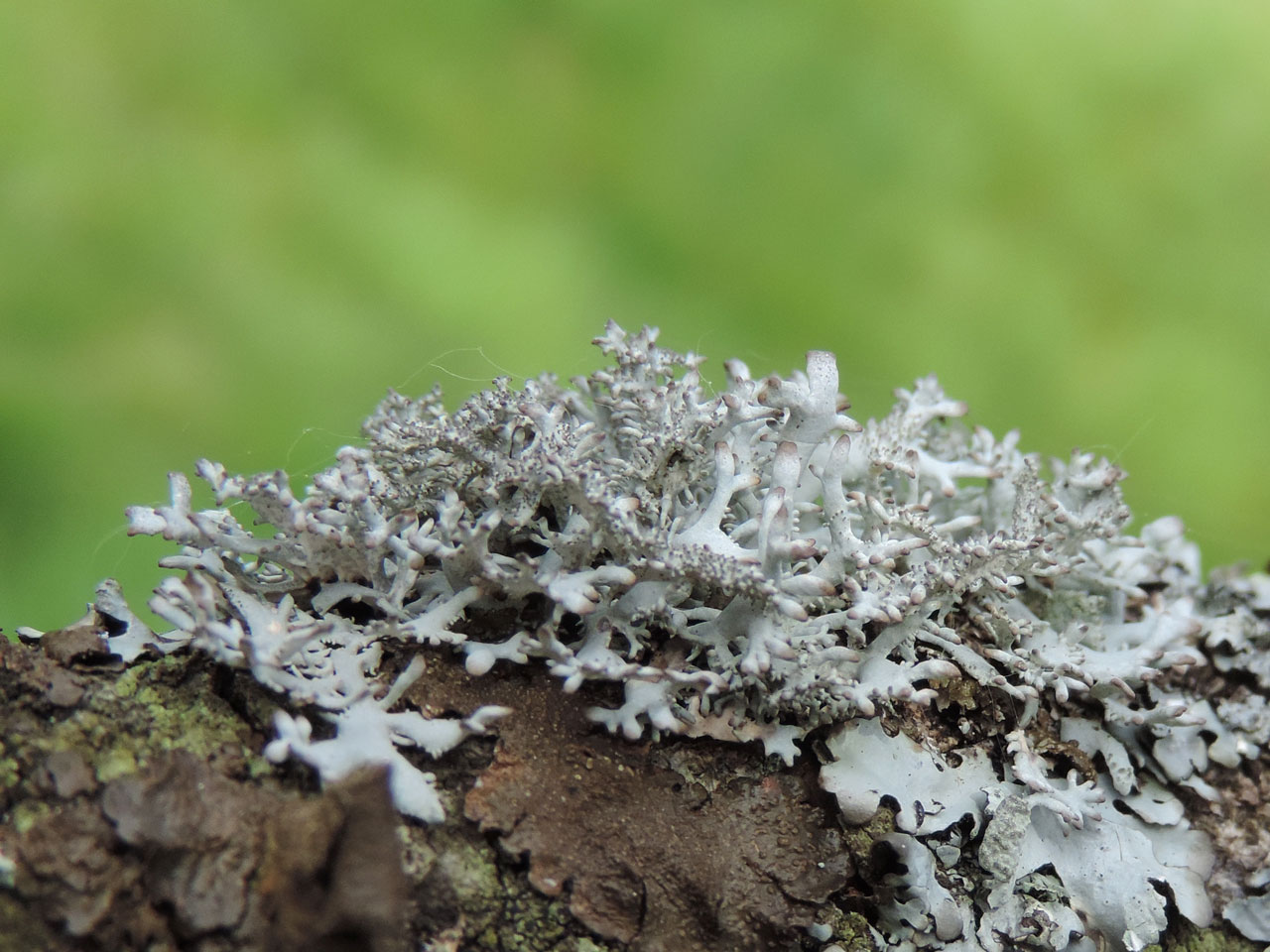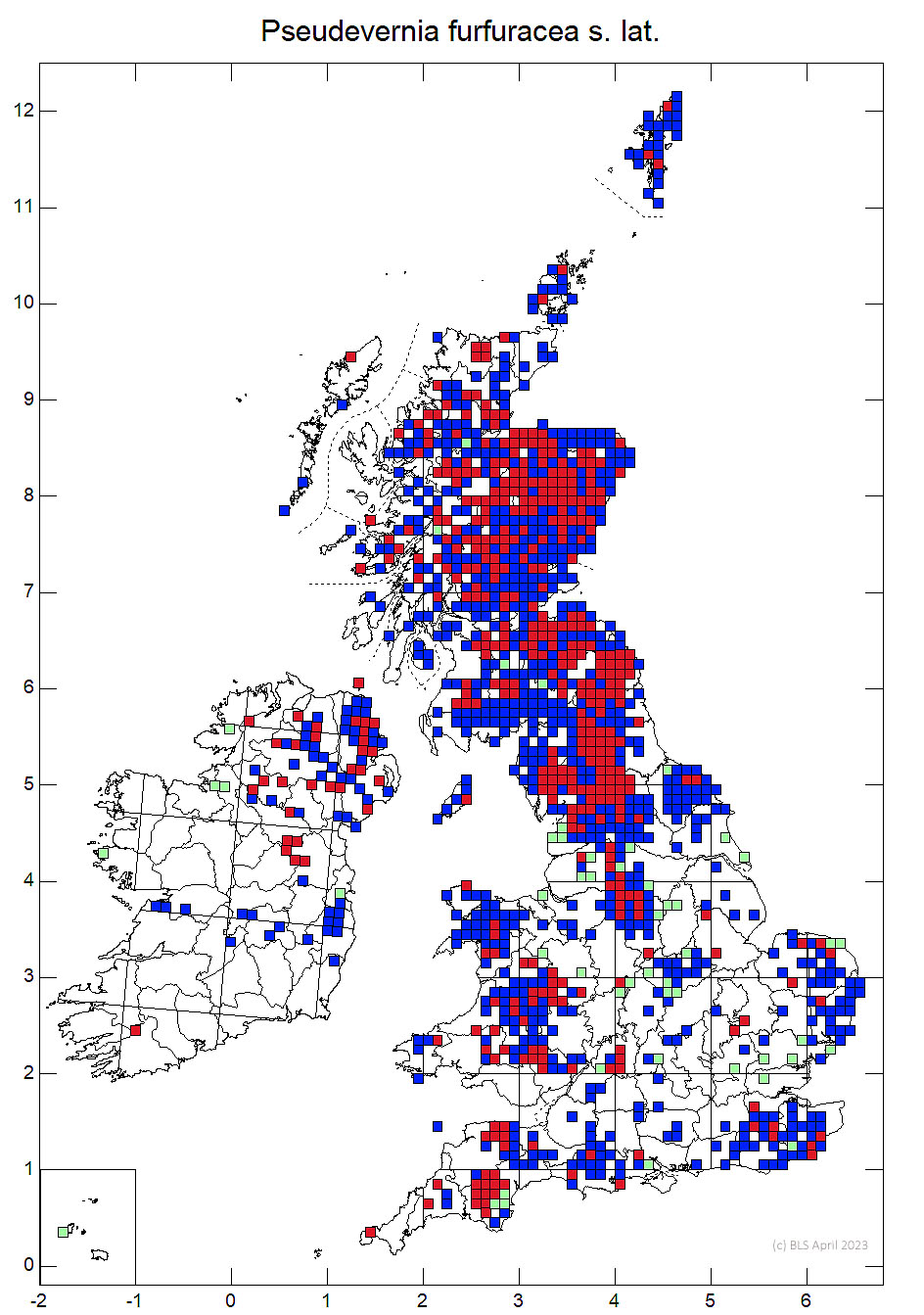Pseudevernia furfuracea s. lat.
A foliose lichen with a bushy and spiky appearance. Resembles Evernia prunastri in habit but is characterised by the presence of isidia and the naked, channelled, often at least partly blackened lower surface. Commonest in the north and found on exposed, well-lit bark and wood, on conifers and acid-barked deciduous trees and fence posts, also on siliceous rocks.
Pseudevernia furfuracea var. furfuracea: thallus to 10 cm diam., composed of a few to numerous hanging strap-shaped lobes 1–4 mm broad, dichotomously branched in one plane, branching widely divergent with short side branches; upper surface grey-white, matt, often rough with isidia or small folioles; lower surface usually channelled, uniformly grey-black or ± mottled black and brownish-white or pinkish, with incurved margins concolorous with the upper thallus. Apothecia infrequent, to 1.5 (–3) cm diam., lateral, on curved part of branches. Asci 30–40 × 14–16 μm. Ascospores 7.5–10 × 4–5.5 μm. Cortex K+ yellow (atranorin); medulla C– K–, KC–, Pd–, UV– (physodic acid). BLS 2363.
Pseudevernia furfuracea var. ceratea BLS 1193 is morphologically identical to var. furfuracea but differs in the C+ red reaction (olivetoric acid) of the medulla; it also has a similar ecology. Var. ceratea is the commoner chemotype in the British Isles, being particularly abundant in the north; its distribution in Ireland, as with var. furfuracea, is less well-defined. It does not form a monophyletic group within P. furfuracea according to Ferencova et al. (2010). BLS 1192 is the code to use for records where the two varieties are not distinguished.
Pseudevernia furfuracea resembles Evernia prunastri in habit but is characterised by the presence of isidia and the naked, channelled, often at least partly blackened lower surface. E. prunastri is only weakly dorsiventral, with a greenish upper surface, has a lax medulla and contains usnic acid with either divaricatic or evernic acid. In W. Scotland Pseudevernia furfuracea often occurs as a morph with very narrow lobes bearing few isidia. Apothecia are very rare, except in N.E. Scotland (Cairngorm region).
See also Fungi of Great Britain and Ireland & Species Description PDF.
On exposed, well-lit bark and wood, on conifers and mainly acid-barked deciduous trees (particularly in slightly acid polluted sites) and fence posts, also more rarely on siliceous rocks.

Widespread throughout Britain (more particularly to the N. & W.), Ireland (especially towards the N.). Appears to be declining in the south east with the decline in SO2 pollution.
An acidophile lichen and sensitive to ammonia pollution
Cannon, P., Divakar, P., Yahr, R., Aptroot, A., Clerc, P., Coppins, B., Fryday, A., Sanderson, N. & Simkin, J. (2023). Lecanorales: Parmeliaceae, including the genera Alectoria, Allantoparmelia, Arctoparmelia, Brodoa, Bryoria, Cetraria, Cetrariella, Cetrelia, Cornicularia, Evernia, Flavocetraria, Flavoparmelia, Hypogymnia, Hypotrachyna, Imshaugia, Melanelia, Melanelixia, Melanohalea, Menegazzia, Montanelia, Nesolechia, Parmelia, Parmelina, Parmeliopsis, Parmotrema, Platismatia, Pleurosticta, Protoparmelia, Pseudephebe, Pseudevernia, Punctelia, Raesaenenia, Tuckermannopsis, Usnea, Vulpicida and Xanthoparmelia. Revisions of British and Irish Lichens 33: 1-98.
Ferencova, Z., Del Prado, R., Pérez-Vargas, I., Hernández-Padrón, C. & Crespo, A. (2010). A discussion about reproductive modes of Pseudevernia furfuracea based on phylogenetic data. Lichenologist 42: 449-460.
Text by N A Sanderson, based on Cannon et al (2023).

